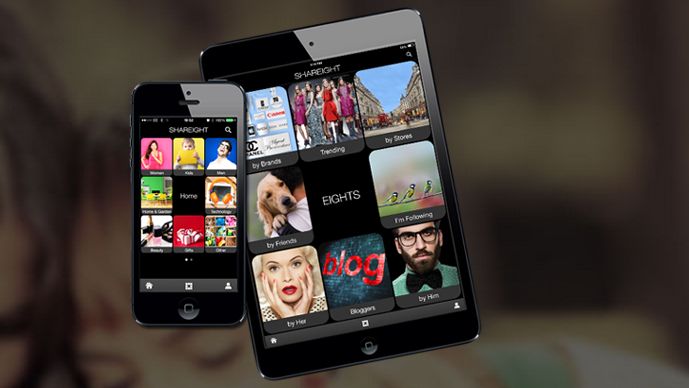How to make shopping on a smartphone a painless experience
The quest continues

Online shopping is now firmly in the driving seat in the UK with the likes of Amazon or eBay showing the way. However, what if you don't want to be tied to one player and like shopping around?
Eight is a lucky number in some cultures but also part of Shareight's name, a London-based start-up came up with a social shopping app with a tile-based user interface (very) loosely based on the 2D, grid-like UI of Android and iOS.
We asked eight questions to its CEO, Grant Slatter, on what it takes to make sure that customers that want to or chose to search and shop online successfully convert into buyers rather than give up at the last hurdle.
TRP: What is your business model all about?
Grant Slatter: We're taking the pain out of shopping on mobile.
If you want to shop on your smartphone the task gets progressively harder. Standard searches lead to multiple retailer websites that, even when optimised for mobile, are hampered by their e-commerce heritage. Comparison between them is difficult and there is no central place to store what you find. Checkout is laborious and cart abandonment rates are high.
With 1.5 billion smartphone users worldwide. Solving this problem is a big opportunity.
Are you a pro? Subscribe to our newsletter
Sign up to the TechRadar Pro newsletter to get all the top news, opinion, features and guidance your business needs to succeed!
We designed an interface smartphone-up, not PC-down, using taxonomy that allows users to reach the top 500 retail search terms in just three taps. Users can save items from multiple retailers in one place for easy comparison and get opinions from friends and family more simply than ever before.
Next on our list is making purchase simple and easy for the consumer. We are now perfectly positioned in the market to solve this final part of the problem, offering both users and retailers an m-commerce channel that works.
TRP: Why have you given us eight options to choose from instead of another number?
GS: We were looking for both an optimal way to visually search for items on a small screen, and to display the results. We noticed that as people make lists of categories and sub-categories they could name seven or eight very quickly but the next would take much more thought to recall.
Upon playing around with a 3x3 grid design we found that by simply dedicating the centre square to a navigational title we could achieve two much bigger things.
Firstly it the top seven search categories could be listed up front with the next most important ones in the remaining button, just one tap away.
This would optimise the vast majority of searches by putting the top 500 retail search categories within just three taps.
Secondly, when the user reached the bottom layer, it would be more relaxing to view the results in uniform collections rather than in an endless list. This was borne out in early testing where users spent three times longer viewing items in this arrangement.
Later we discovered that these insights are known to psychology. Arthur Miller theorised that the number seven, plus or minus one, was about the limit of immediate memory (thus eight was the maximum), and Barry Schwartz argued that too many options led to a 'Paradox of Choice' where users felt overwhelmed.
TRP: Tell us about some of the retailers you're working with.
GS: Our aim is to bring together all of the major brands and retailers in one place. A true virtual High Street if you like. People like Etsy and Wanelo are focused on bringing together lots of independent retailers and brands, At SHAREIGHT we're bringing together all the major ones.
The first retailer we secured was John Lewis with its huge catalogue of great products from hundreds of brands.

Désiré has been musing and writing about technology during a career spanning four decades. He dabbled in website builders and web hosting when DHTML and frames were in vogue and started narrating about the impact of technology on society just before the start of the Y2K hysteria at the turn of the last millennium.